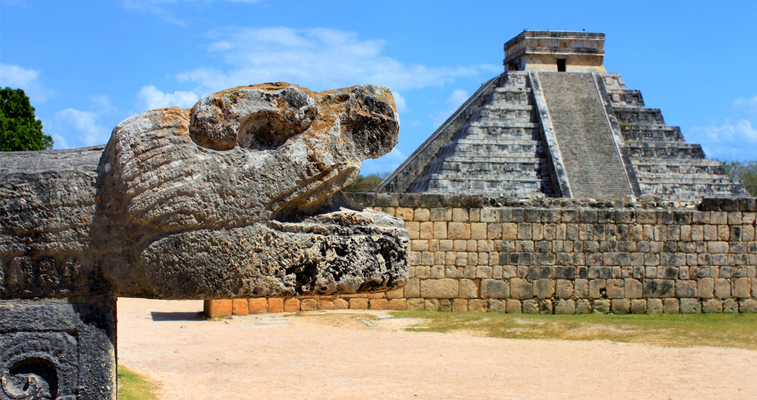Cancun from within
Wednesday, June 18, 2014

“I come from everywhere and everywhere is where I’m going”. This phrase is engraved on a vertical statue at the entrance to Kukulkan Drive, which links the town to the hotel zone. And no, it is not a phrase that refers to the more than 11 million tourists who flock to Cancun every year, but rather to those who came to make a living or start a new life in the city. Nobody over the age of 40 was born there. Founded in 1970 to boost Mexico’s tourism industry, Cancun soon became a magnet for people from other states. The earliest arrivals came from places nearby, such as Yucatan.
Manuela Uch was born in Valladolid, Yucatan. In 1975, she migrated to the then recently-built Cancun with her husband, Sergio Herrera, who got a job as a barman in one of the new hotels. After 15 years, with his savings and her good cooking, they opened El Pocito, a small restaurant in a part of town that no tourist guide would ever dare to mention, simply because it is located in a working class district, surrounded by car repair shops, a dubious-looking table dance establishment, and traffic. In other words, a long way from the sea and sand.
Doña Manuela, dressed in the same traditional ‘huipil’ as the waitresses at El Pocito, recalls how the area where they settled was virtually the city’s “last frontier” in the early days. Now it has been swallowed up by urban development. But as the years passed and Cancun grew, so the fame of her place spread.
Various travel blogs refer to it and the style of the building, identical to that of the village she comes from: four white walls and a roof made of Guano branches, with a triangular opening on each side (north and south) to let the wind blow right through in the event of a hurricane (that’s how she survived Hurricane Wilma in 2005). The restaurant specializes in the same Yucatan cuisine that has inundated the whole of Cancun, but you can enjoy it as if you were eating at home. People come from France, United States and Canada; artists who are filming or just passing through; football players from the local professional team, and adventurers, tired of the hustle and bustle and the big fast food chains.
Manuela takes the idea of her restaurant being like eating at home, literally. According to Valladolid tradition, on Monday she serves beans with pork; on Tuesday it is ‘puchero’ (chicken, pork and beef in a broth with noodles); on Wednesday, ‘mechado’ (turkey and pork in a broth with almonds and spices); on Thursday, marinated chicken, and on Friday, chicken ‘pibil’. These dishes are always accompanied by ‘papatzules’, ‘salbutes’, and her internationally-acclaimed stuffed cheese.
In addition to Yucatan cuisine, various places around the city offer ‘pozole’ from Guerrero, ‘carnitas’ from Michoacan, Hidalgo barbecue, Jalisco ‘birria’, and all kinds of ‘tacos’; in other words, all the flavours and variety of a Mexico not included in an ‘all inclusive’ stay.
The city’s chronicler, Fernando Marti, says that after three days of sun and hotel, tourists decide to go out and explore. Well, the centre warrants an entire day. Nader Avenue, Cancun’s first street, is an interesting kaleidoscope of buildings that reflect the city’s multicultural spirit, from houses that look like igloos to buildings whose facades have distinctly Arabic features, not to mention restaurants and cafes of every kind that are ideal spots to quench the thirst or simply to stop at and recover from the heat.
Or there is Nader Park, a mini-jungle set amidst the concrete and perfect for drinking a fresh passion fruit juice or ‘horchata’. On the other side of Tulum Avenue, you only have to walk a few metres to come across an alternative form of entertainment. Tulipanes Drive becomes transformed at night, and in addition of having a couple of places where you can eat and enjoy a few drinks, an Italian restaurant and Roots jazz club, it takes you to what the locals consider to be the centre of their city: Las Palapas Square.
There you will find an open-air theatre, and all kinds of desserts and delicacies –if you happen to be there, don’t miss ‘marquesitas’, which come originally from Merida and are renowned in Yucatan–. This is the family meeting place per excellence, “where tourists who want to see something different go”, insists Marti, who warns that the area is a bit rundown but acknowledges that you will always find something more authentic there than the “plastic shows at the hotels”.
For your suitcase on the journey back home
The Virgin of Guadalupe: Mexican religious icon on prints, pictures or trinkets.
Silver jewellery: beautiful earrings, necklaces and bracelets at affordable prices.
Pottery handicrafts: noted for their bright colours. The commonest figures are skulls and mariachi singers.
Havana Chilli: one of the hottest varieties of chilli in the world.
Sweets: the commonest ones taste of tamarind and pepper.
Glossary
Four basic phrases in Mayan:
Bix a k’aaba’?
What’s your name?
Ma’alob k’iin
Good morning
Muuchxiimbal
Let’s take a walk
together
Tak saamal
Goodbye

You may find more destination articles at www.aviancaenrevista.com
